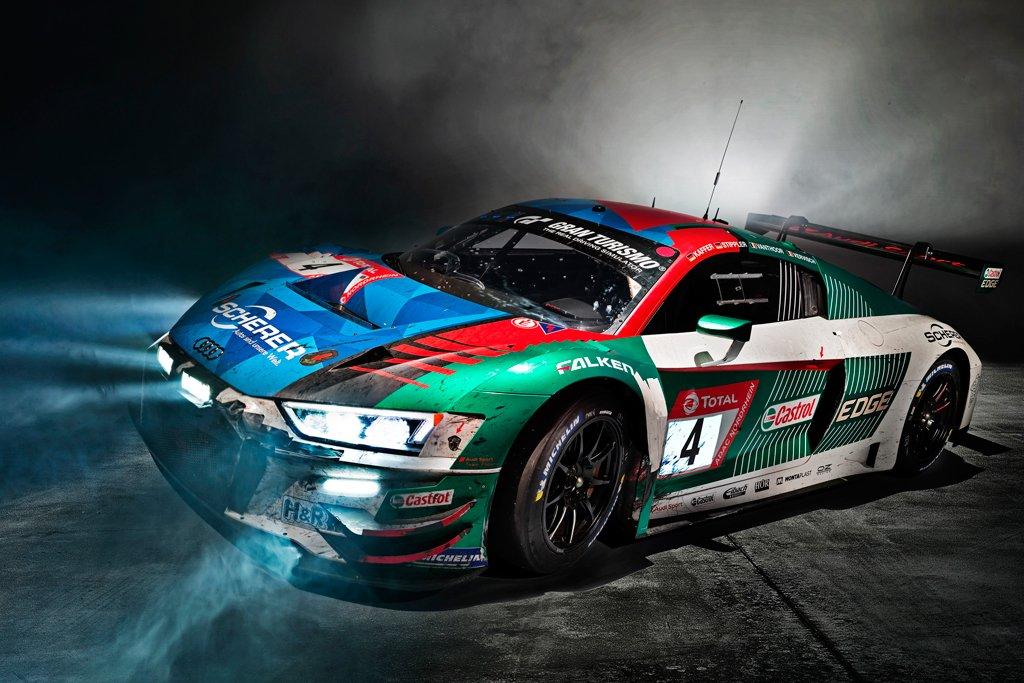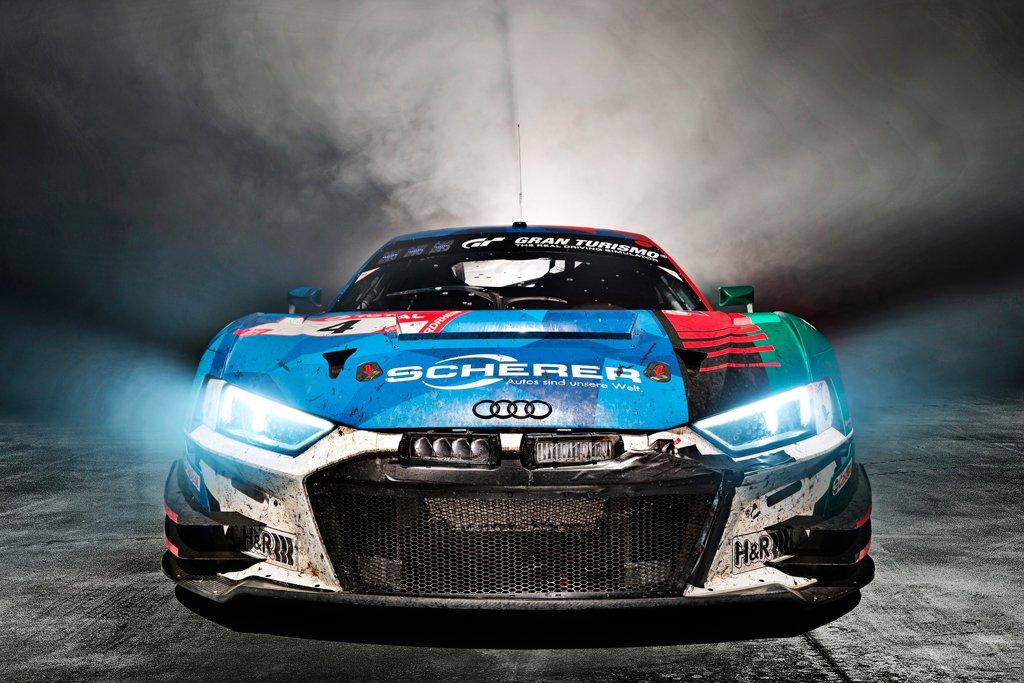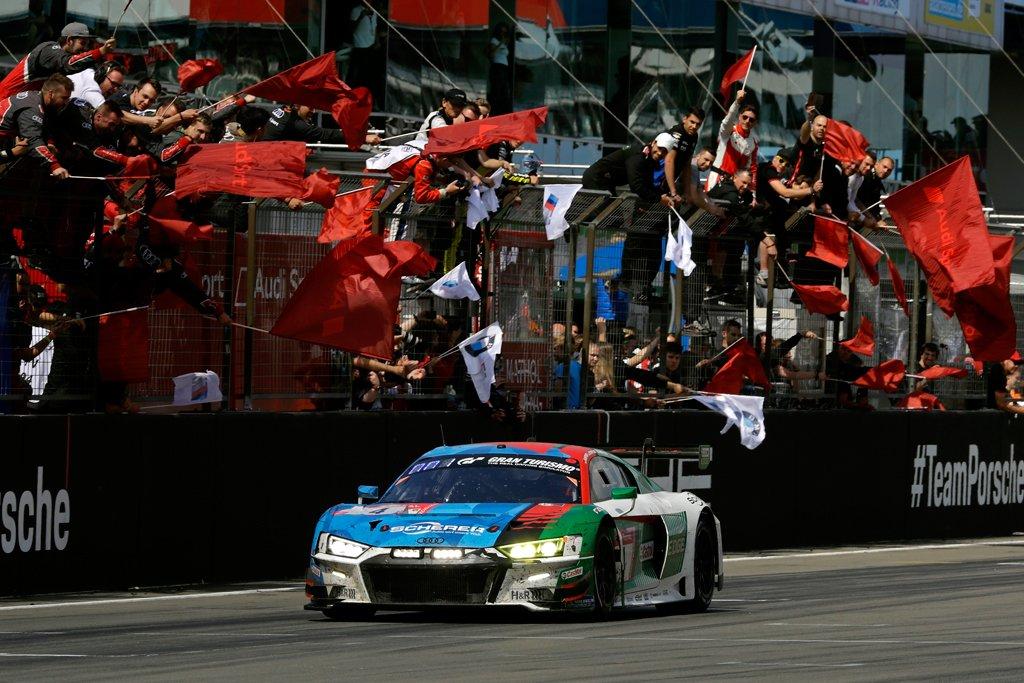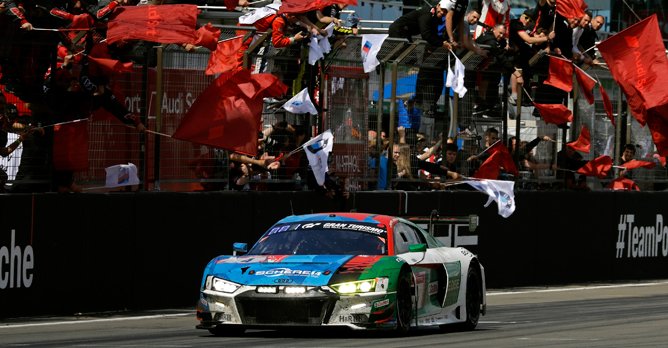Audi R8 LMS proves the durability of its designs
25 Jul 2019|2,560 views
The race car with which Audi Sport customer racing won the 24 Hours of Nurburgring for the fifth time has an unusual history. It stands for the performance capability of a concept that customers benefit from all over the world.
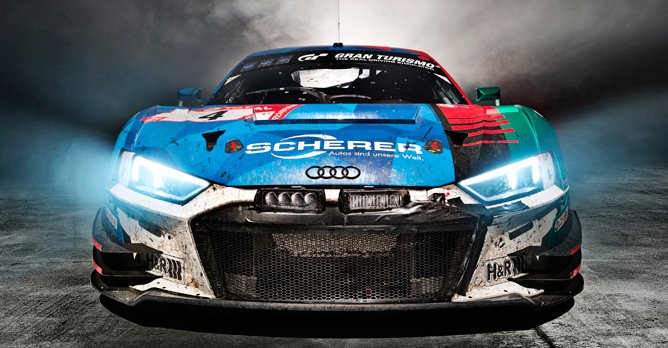
The six-hour race was held at Le Castellet on 24 June 2017. At that time, Audi Sport Team ISR fielded the Audi for drivers Jamie Green, Frank Stippler and Kelvin van der Linde. To date, the car has done three tests and contested 12 races with four different teams, including the 24 Hours of Spa twice, the 24 Hours of Nurburgring twice and the California 8 Hours at Laguna Seca twice. By the time the last checkered flag fell, this Audi R8 LMS had covered a total distance of 29,836km at qualifying and racing speed within the space of two years.
"This statistic is not only a nice success for Audi Sport customer racing, but also sends a message to our customers," says Chris Reinke, Head of Audi Sport customer racing. "In our strategic commitments, we definitely rely on 'used cars' as well and demonstrate the success that can be achieved with them. However, the greatest benefit to our worldwide customers is the durability of our engineering design."
The production based GT3 race car shares 50% of its components with the production model. The multi-material chassis of aluminium and Carbon Fibre Reinforced Polymer is produced at the same manufacturing facility as the production model, at Bollinger Hofe of Audi's Neckarsulm site. The quality of the car's design can be seen in its weight as well: The race car tips the scales at merely 1,235kg but must weigh 1,310kg in the Nurburgring 24 Hours due to race regulations.
Furthermore, the V10 engine is also almost completely production based. With service intervals of 10,000km and rebuild intervals of 20,000km, the customer racing car makes particularly economical operation possible for the teams. The powerplant in the winning car had already run for 5,000km before the event at the Nurburgring began.
With its second 24-hour race victory within the space of just six months following its successful debut in Dubai in January and 13th overall victory in a 24-hour event, the Audi R8 LMS ranks among the best models worldwide. More than a dozen manufacturers offer GT3 cars for customer racing. Another competition is coming up soon. Just five weeks after the Nurburgring, the next major 24-hour race at Spa is on the calendar. Audi has won the iconic event in the Ardennes four times since 2011.
The race car with which Audi Sport customer racing won the 24 Hours of Nurburgring for the fifth time has an unusual history. It stands for the performance capability of a concept that customers benefit from all over the world.

The Audi R8 LMS proudly wears the 29,836km of racing mileage it has covered within the last two years
The six-hour race was held at Le Castellet on 24 June 2017. At that time, Audi Sport Team ISR fielded the Audi for drivers Jamie Green, Frank Stippler and Kelvin van der Linde. To date, the car has done three tests and contested 12 races with four different teams, including the 24 Hours of Spa twice, the 24 Hours of Nurburgring twice and the California 8 Hours at Laguna Seca twice. By the time the last checkered flag fell, this Audi R8 LMS had covered a total distance of 29,836km at qualifying and racing speed within the space of two years.
"This statistic is not only a nice success for Audi Sport customer racing, but also sends a message to our customers," says Chris Reinke, Head of Audi Sport customer racing. "In our strategic commitments, we definitely rely on 'used cars' as well and demonstrate the success that can be achieved with them. However, the greatest benefit to our worldwide customers is the durability of our engineering design."
The production based GT3 race car shares 50% of its components with the production model. The multi-material chassis of aluminium and Carbon Fibre Reinforced Polymer is produced at the same manufacturing facility as the production model, at Bollinger Hofe of Audi's Neckarsulm site. The quality of the car's design can be seen in its weight as well: The race car tips the scales at merely 1,235kg but must weigh 1,310kg in the Nurburgring 24 Hours due to race regulations.
Furthermore, the V10 engine is also almost completely production based. With service intervals of 10,000km and rebuild intervals of 20,000km, the customer racing car makes particularly economical operation possible for the teams. The powerplant in the winning car had already run for 5,000km before the event at the Nurburgring began.
With its second 24-hour race victory within the space of just six months following its successful debut in Dubai in January and 13th overall victory in a 24-hour event, the Audi R8 LMS ranks among the best models worldwide. More than a dozen manufacturers offer GT3 cars for customer racing. Another competition is coming up soon. Just five weeks after the Nurburgring, the next major 24-hour race at Spa is on the calendar. Audi has won the iconic event in the Ardennes four times since 2011.
Latest COE Prices
August 2025 | 2nd BIDDING
NEXT TENDER: 03 Sep 2025
CAT A$104,524
CAT B$124,400
CAT C$72,190
CAT E$125,001
View Full Results Thank You For Your Subscription.
